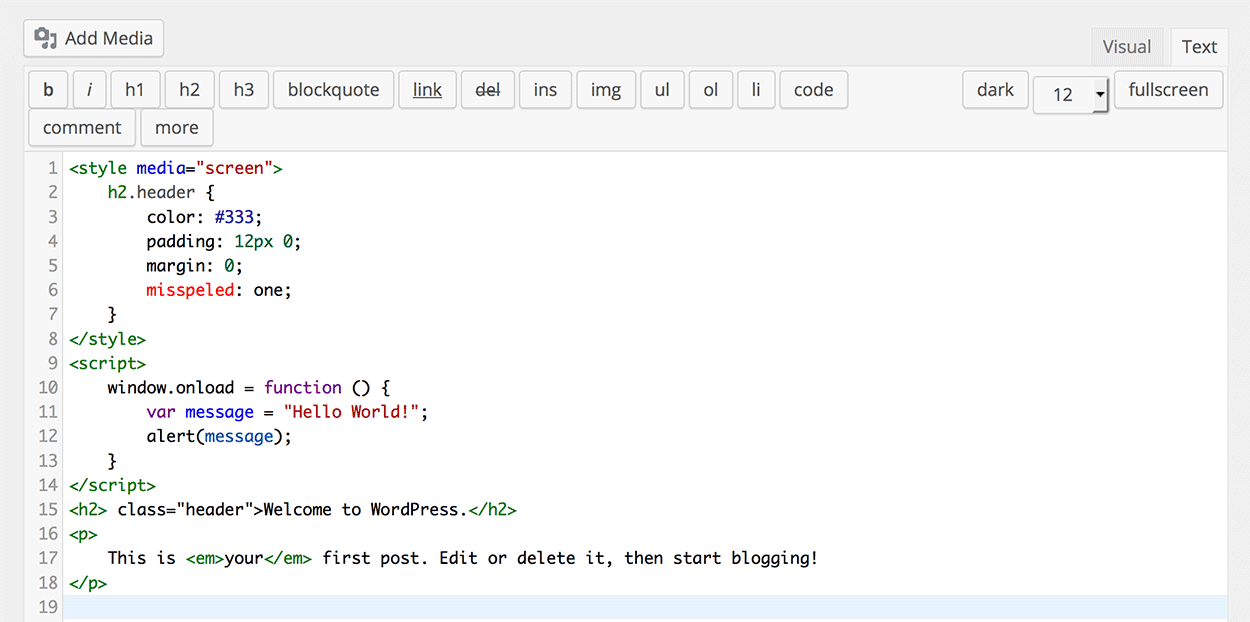
-Step-4.jpg)
- #Color text editor how to#
- #Color text editor install#
- #Color text editor free#
- #Color text editor mac#
#Color text editor how to#
You certainly won't master it, and it won't even get into syntax highlighting, but you will learn how to navigate a file and you'll get a hint of its power.Įnabling syntax highlighting should be as easy as :syntax on, though you may have to specify the syntax. You can learn vim with the vimtutor command in about half an hour. For example, here is gvim showing /var/log/syslog: Vim recognizes certain log file types and will color them once you enable syntax highlighting. Is there any text editor - or alternatively, plugins for existing editors - out there?
#Color text editor free#
(I thought, as a backtrace problem, this question is appropriate here - otherwise, admins, feel free to move it to softwarerecs) To format selected text in uppercase, lowercase, or mixed case, choose Edit > Transformations, then choose an option.I have a rather large backtrace, which is kind of difficult to read, so I thought I'd color the portions of the backtrace text for easier reading. If you want it to use the same font, spacing, and tabs as the selected text, select the checkboxes. Click Add to Favorites, then type a name. Save the style of selected text as a favorite: Click the Paragraph Styles button in the toolbar, then choose Show Styles. Make pasted text match the text around it: Select where to paste the text, then choose Edit > Paste and Match Style. Then click “Select within entire document” or “Select within existing selection” and click Select. Select Document Styles or Favorite Styles, locate the style you want to find using the controls, and click Select. View all instances of a style in a document: Click the Paragraph Styles button in the toolbar, then choose Show Styles. Reuse a style already in a document: Select the text, choose Format > Font > Copy Style, select the text to reformat, then choose Format > Font > Paste Style.
#Color text editor mac#
If your Mac has a Touch Bar, you can use it to apply bold, italic, or underline. Note: If you don’t see the Paragraph Styles button at the left end of the toolbar, make the window wider.Īpply a style: Select text, click the Paragraph Styles button in the toolbar, then choose a style. To open it from the Fonts window, click the Font Panel Actions menu, then choose Manage Fonts.
#Color text editor install#
Use Font Book to install and manage fonts on your Mac. If the selected font includes typography, select or deselect options. Set typographic options: Click the Font Panel Actions menu, then choose Typography.

Insert symbols and characters: Click the Font Panel Actions menu, choose Characters, then drag a symbol from the Character Viewer into your document. Drag the Angle wheel to change the direction of the light source. Drag the sliders to adjust the shadow opacity, blur, and offset. To change the line color, choose Color from the pop-up menu, then click a color.Ĭhange the font color: Click the Text Color button, then select a color in the Colors window.Īdd a shadow to text: Click the Text Shadow button. Underline or strikethrough text: Click the Text Underline or Text Strikethrough button, then choose an option from the pop-up menu, such as Double. If you don’t see any sizes, click the Font Panel Actions menu, choose Edit Sizes, then select Fixed List, Adjustable Slider, or both. If you don’t see the search field in the Fonts window, make the window wider.Ĭhange the font size: Drag the slider or select a size in the list. To search for a font, select All Fonts in the Collection column, then type the font name in the search field. Select the text you want to format, then do any of the following:Ĭhange the font: Select a collection, family, or typeface (such as Bold). To preview options as you select them, click the Font Panel Actions menu, then choose Show Preview. In the TextEdit app on your Mac, choose Format > Font > Show Fonts.

You can also do more advanced formatting in the Fonts window. If your Mac has a Touch Bar, you can use it to quickly format selected text. You can change text font, size, color and other basic formatting using the toolbar buttons.


 0 kommentar(er)
0 kommentar(er)
